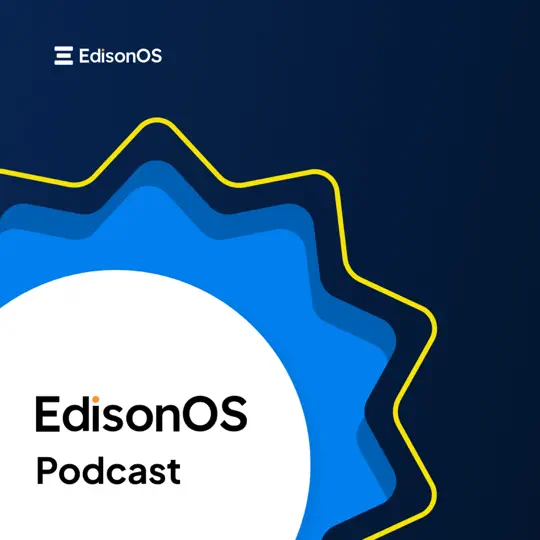




Key Takeaways
- ED is binding and best for students sure about their dream college.
- EA offers early results without commitment, ideal for flexible applicants.
- RD provides more prep time and freedom but comes with higher competition.
If you check their website, you’ll find Brown University has the option of Early Decision for admission to its undergraduate program. Harvard has the option of Restrictive Early Action. These colleges, like all other colleges, also have the standard option of Regular Decision. Not understanding such terminology can not only baffle students but, more importantly, put at risk their chances of getting into their dream college.
In this article, we explain and compare Early Action vs Early Decision vs Regular Decision in the context of undergraduate college admissions to the US. We cover the pros and cons of each alternative. We look at the SAT and ACT deadlines for each of these alternatives. Next, we discuss superscoring, explain how to pick the right path based on test readiness, and offer a sample testing plan for the applicants of 2026. Finally, we answer some key FAQs.
We hope this guide will help tutors, parents, and students alike. Let’s begin.
What Is Early Decision (ED)?
Early Decision is a binding admission plan under which the students must enroll at a college, if the college accepts the student.
Early Decision has four important features:
- Binding: Students must attend the college if they are accepted
- Restrictive: Students may not apply to any other colleges for early decision
- Early deadlines: Students must test and apply early to the college, as per the college deadlines
- Penalty: There could be consequences - typically forfeiture of enrolment deposits - if the student doesn’t honor the binding agreement
Early decision requires that the SAT/ACT scores must be finalized before their deadlines so that colleges can arrive at a conclusion in time. Not all colleges offer ED; those that do typically require students to apply by November 15. In some colleges, applications are due by November 30. Tutors who can guide their students on key matters like, for instance, how often to take the practice SATs can add great value here.
Early Decision may look attractive but it’s the best option only for students who are super-clear about their dream college. Further, this can limit the chances of winning financial aid - something that might have happened had they chosen a different college..
Colleges that offer ED have a high acceptance rate of students under the ED pool. However, that doesn’t mean your child or student’s chances will improve simply because they’re applying for the Early Decision. The average acceptance rate is high simply because the profile of these applicants matched the college requirements more closely. In other words, they were already best-fit candidates from the start.
What is Early Action (EA)?
Early Action (EA) is a non-binding college application process where students apply and receive admission outcomes earlier than the regular applicants.
Early Action is characterised by:
- Non-binding: Students have the option of joining elsewhere, so the admission offer from a college is not obligatory
- Non-restrictive: Students may apply to other colleges, subject to the terms of each college
- Early deadlines: In most cases, the Early Decision and Early Action SAT and ACT deadlines are similar
Early action isn’t the same in all colleges, and some colleges could have additional conditions. As a result, Early Action is further categorized into two types: non-restrictive Early Action and restrictive Early Action.
University of Chicago, for instance, has a non-restrictive Early Action plan. It permits students to apply under an Early Decision plan elsewhere. In case a student is accepted at both colleges, the Early Decision plan prevails and students are required to join the Early Decision college.
Harvard, on the other hand, as a restrictive Early Action plan. It prevents students from applying “to any other private institutions under Early Decision, Early Action, or Restrictive Early Action plan at a public university”. Students may, however, apply for Regular Decision or Early Decision II in other colleges.
Early Action offers flexibility because students can apply elsewhere and yet get to learn about the admission decision of the college early. This makes it a great option for students who have prepared early for the SAT/ACT and wish to turn that into an advantage by keeping their options open.
What Is Regular Decision (RD)?
Regular Decision is the conventional application and admission process, with no early deadlines, commitments, or early decisions.
- Non-binding: There is no obligation on the student to accept an admission offer
- Non-restrictive: Students may apply to any college without restrictions
- Regular deadlines: Students may apply till early spring and colleges will make known their decisions by the end of spring
Regular Decision is the conventional method and yet students stand to gain in a number of ways. Firstly, there’s no binding so students can keep their options open till the end. That means a student who is unsure about decisions will have adequate time.
Next, students get to strengthen their applications by collecting recommendations. They also have a little longer to build extracurricular achievements and add it to their admission application.
Finally, it offers students enough time to consider all the factors relevant for course selection, apply for financial aid, and optimize their decision. All these factors make Regular Decision ideal for students who started late or were unsure of their SAT/ACT test-prep - the longer time period gives them time to prepare better. Tutors play a critical role here, because they can track their students’ test progress and guide them to achieve a higher score with minimum effort.
Testing timeline recommendations
The below summarizes the type of college application types, their respective test dates, requirements, and the type of student the process is most suitable for.
As this discussion on Early Action vs Early Decision vs Regular Decision unfolds, it will become increasingly clear that each type of admission plan has their unique pros and cons.
Everything, from SAT and ACT deadlines to the test prep strategy for ED/EA/RD is different. You will see additional angles which will further enhance your ability to guide your students better.
EA vs ED vs RD: Pros and cons of each option for test-takers
Because each student, their background, and their core strengths are unique, it is neither possible nor advisable to say which of the admission plans.
Early Decision testing strategy, for instance, is best suited for students who are ready with their test-prep as well as their applications, and have a strong clarity about what college they’d like to get into. That would not suit a student who needs more time figuring out which colleges to apply to and how to weigh the financial aid options.
The table below summarizes some of the major pros and cons of each admission plan:
Superscoring and score choice policies
Superscoring is a practice where colleges take a student’s highest scores for each section from different test dates and build an aggregate score out of it. In case of the ACT, the aggregate score is arrived at by averaging the highest sectional scores. In the case of the SAT, the best sectional scores are simply added up to calculate the composite score (Learn more about ACT superscoring here).
While superscoring is supposed to showcase the best a student can do in a particular section, some colleges still prefer test scores from only one date instead of superscoring. It is important that your students understand how each college treats multiple test dates, especially under tight ED/EA timelines.
Colleges may be divided into three categories:
1. Superscore only: These colleges accept superscores and have no additional restrictions.
Implications: Students need to finish their tests before ED / EA deadlines.
2. Superscore plus all scores: These colleges accept superscores, but they also require students to send all their scores ever.
Implications: Students need to finish their tests before ED / EA deadlines and also make sure they don’t do too poorly in any section on any of the test dates.
3. Choice of scores: These colleges permit students to decide which scores to send, so the college has access to only that score. These are also called Single Test-Date colleges.
Implications: Students have more freedom but may not be able to benefit from Superscore provisions.
It must be borne in mind that SAT Superscore is different from SAT Superchoice, which allows students to choose which scores to send to colleges.
More colleges accept the SAT Superscore than ACT Superscore, though the gap is reducing.
How to pick the right path based on test readiness
While a number factors influence your students’ decisions to opt for ED/EA, the four most important questions to ask your students are:
- Will you be fully ready for the tests as per the SAT and ACT deadlines?
- How clear are you about your dream college?
- What is the readiness status of your college admission application, especially in terms of recommendations and extracurricular activities?
- How important - or critical - is it for you to get financial aid?
Here are four scenarios that will cover all possibilities.
Scenario 1: The SAT/ACT scores, college applications, and clarity about the dream college will be ready by fall.
Recommendation: Choosing ED over other college application types will be a sensible course of action.
Scenario 2: The student wants an early response but does not wish to be bound at this stage.
Recommendation: EA will offer them more flexibility.
Scenario 3: The student needs time to improve their scores and applications, or is uncertain about the course and target college.
Recommendation: RD will offer them more flexibility and time to make up, without any downside.
Scenario 4: Merit scholarship or financial aid is very important or critical for your students.
Recommendation: Have students and their parents first check with the aid sponsors and colleges. After that, they can work their way backwards to choose between ED, EA, and RD.
Sample testing plan (for the class of 2026 applicants)
Different requirements and scenarios would lead to different testing plans for students. That includes the SAT and ACT deadlines and their test prep strategy. For ED/EA/RD, therefore, it’s not possible to say there’s only one way of getting things right.
Here is a sample testing plan for 2026 applicants. This would provide you with all the inputs you need to create plans for other use cases.
It must be remembered that you will have to make allowances for any special requirements (or special skills) of your students. For instance, a student who’s highly skilled with language and needs most of the help with math only might need a shorter window. Against that, you don’t want students to hurry into an early test date or commit themselves to a college much lower than what the student deserves.
Closing remarks
In the debate of Early Action vs Early Decision vs Regular Decision (RD), there’s no one right or wrong answer that’s appropriate for each student. Students who are better prepared for the SAT/ACT but aren’t sure about their dream will, for instance, make a decision very different from a student who is not prepared for the test but has a clear dream college.
Because the SAT and ACT play an important role in college admissions, you want to make sure your students enter the test room confidently. And true confidence comes only from the best possible preparation, backed by detailed feedback on mock test performance.
That’s where EdisonOS can help. Backed by the proven trust of hundreds of tutors who have tutored over 17,000 students, EdisonOS is poised to help tutors script the success story of their students. Why not get in touch with one of our experts and find out more?
FAQs
1. What’s the last SAT/ACT I can take for Early Decision?
The October test is likely the last SAT/ACT for Early Decision. That’s because ED deadlines are no later than mid November.
2. Can I apply Early Action if I haven’t taken the SAT/ACT yet?
Yes, but that depends on the college requirements. Unless the college is test-optional, your application could be deemed incomplete and hence is liable to rejection.
3. Do colleges prefer early applicants with higher test scores?
While that’s true in general, two additional factors must be considered. One, colleges look at several factors besides the test scores, so a high score isn’t a guarantee for admission. And two, early applicants typically come with a profile that’s a great fit for the college’s requirements. So if you see a high percentage of Early Decision applicants being accepted at a college, it’s not because they had applied early; it’s because their profiles matched what the college was looking for.
4. Can I update my SAT/ACT score after submitting my application?
When to submit SAT/ACT scores is part of college policy. Some colleges do not permit updating the score after a student has submitted their application, while other colleges do. Even among those that do, the requirements are different. For instance, they may require that only the testing agency should send those scores, and would not accept self-submission by the student.
5. Should I delay applying until I improve my test score?
Ideally, no. It’s better to apply on time and retake the test if the target colleges accept updated scores later. Students should consider delaying only if their score is far below the college’s middle range or if they genuinely need more prep time to perform well. Some counselors go to the extent of saying that delaying should not even be a plan B, because then under-confident students might cave in and begin delaying.
6. How do I find out if a school superscores SAT or ACT?
Students can check the website of the college. If the information is missing, not updated, or unclear, they can email the college. Cross-checking with tutors and counselors is always a good idea. Besides, students could look around and see if they have a friend, neighbor, or cousin who went to the college the student is interested in. Third-party websites may provide the list of such colleges, but it’s not wise to rely solely on their information.
7. Do all colleges offer Early Decision or Early Action?
No. Some colleges offer all alternatives, while some offer only early action. Many colleges offer only the Regular Decision plan.

Tutors Edge by EdisonOS
in our newsletter, curated to help tutors stay ahead!
Tutors Edge by EdisonOS
Get Exclusive test insights and updates in our newsletter, curated to help tutors stay ahead!










.png)
.webp)
